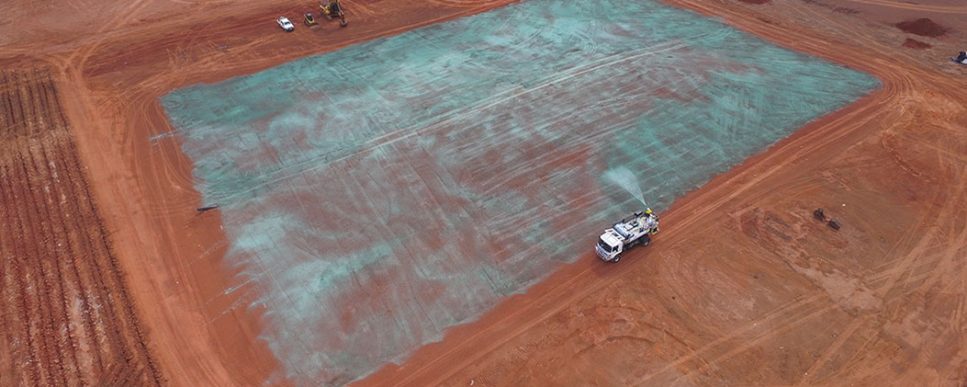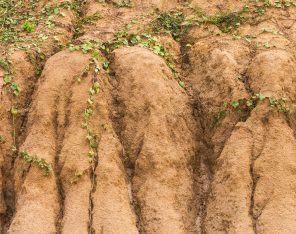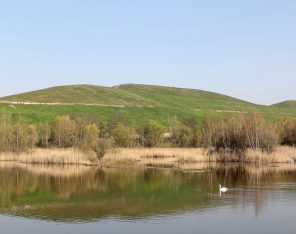
What Is Hydromulching?

Hydromulching is a one-step process that involves spraying a slurry of water, seed, fertiliser, cellulosic mulch, tracking dye and a binder/tackifier from a specially designed hydroseeding truck, referred to as a hydroseeder, that keeps this mixture agitated during application, ensuring even coverage. Depending on the hydroseeder, the cannon, also referred to as a boom, is capable of spraying the mixture in excess of 100 metres, enabling coverage in even the most difficult to reach areas.
The addition of mulch into the slurry is what differs hydromulching to hydroseeding and provides a number of benefits. Firstly, the mulch acts as a hydraulic growth medium and provides a protective cover and moisture reservoir for the seeds as they wait to germinate. It can increase the soil temperature and also stop birds from getting to the seed before it sprouts. Secondly, when commonly used in combination with a binder/tackifier the fibres will stick together and “hold onto” the ground which provides erosion control in the short term. During the waiting period for the seed to strike, this surface cover works to stop the wind from picking up dust and displacing the seed while aiding in rain and water run-off from eroding the topsoil, hindering growth. Depending on seed choice, time will vary for seed germination.
Hydromulching is an effective and viable option for vegetating large expanses of land quickly and easily, whether they are flat, hard to access or significantly sloped. Hydro mulching solutions can be used for erosion control and stabilisation of road side batters, soil stockpiles, long term dust suppression, mine site rehabilitation and remediation of large industrial areas.
There are numerous types of mulch available in the Australian market, all with their own benefits. Click here – ‘Common Mulches Used for Hydromulching’ – to find out more information about the numerous mulches on offer and which one may be suitable for your project goals.





